Training Weightlifting Word Team Members Alex Lee & Sarah Robles
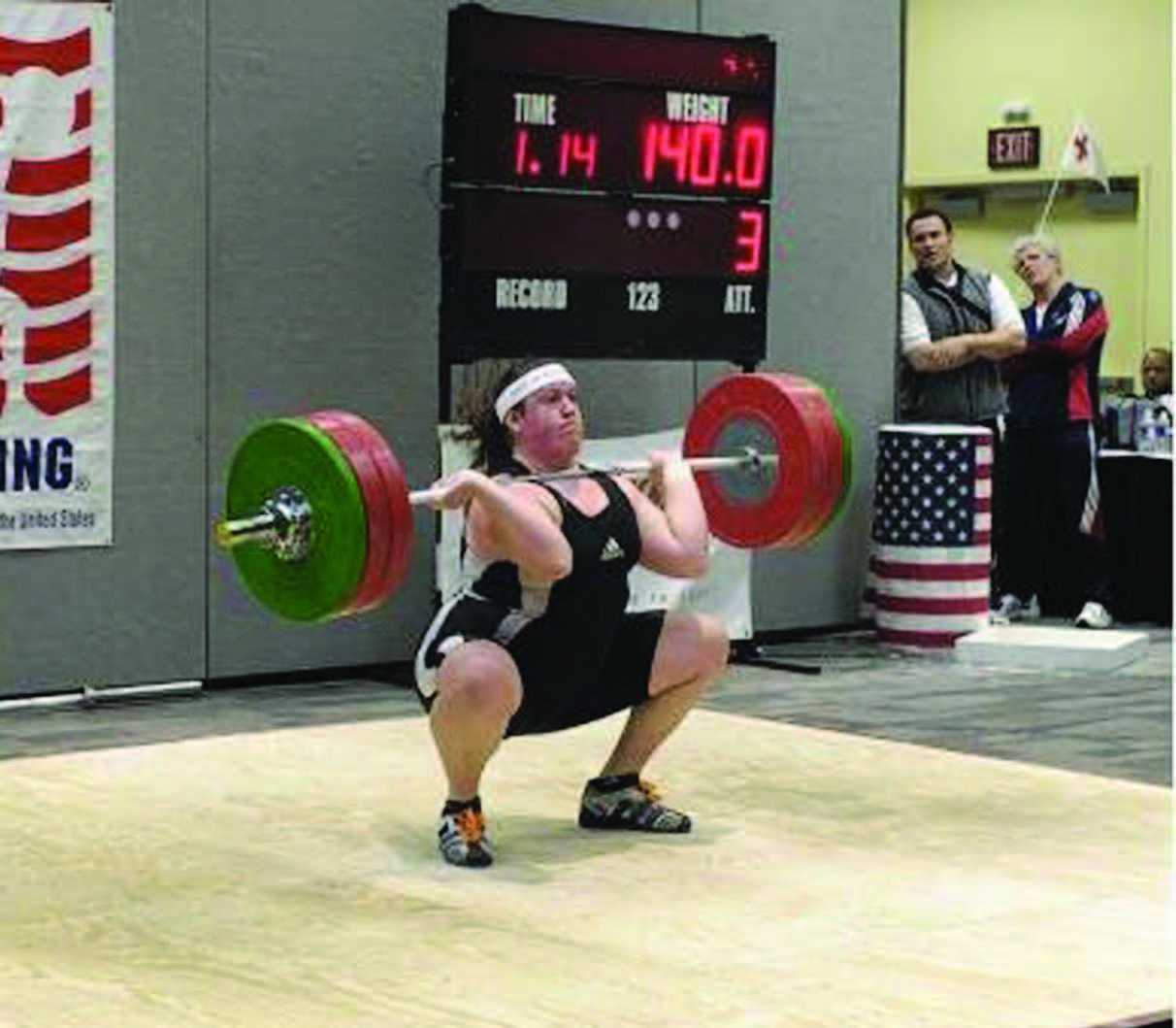
Olympic weightlifting is not a one-size-fits-all sport, but one which requires modifications for individual athletes. I will give a brief description of the training program leading up to the 2010 World Championships for World Team Members Alex Lee and Sarah Robles; their similarities and differences and how I prepared them for the biggest event of their careers.
Alex Lee
Alex Lee was 2008 Junior World Team Member, 2009 Pan American Team Member, 2010 Collegiate National Champion, 2010 World University Champion, Collegiate American Record Holder in the Clean & Jerk and Total, and 2010 World Team Member. At the World Championships he placed 20th in the 62 kilo weight class. Alex was the only American to attempt an American Record at the World Championships. He is currently the number one ranked lifter in the 62 & 69 kilo weight class nationally. Alex is also an Olympic Hopeful for 2012.
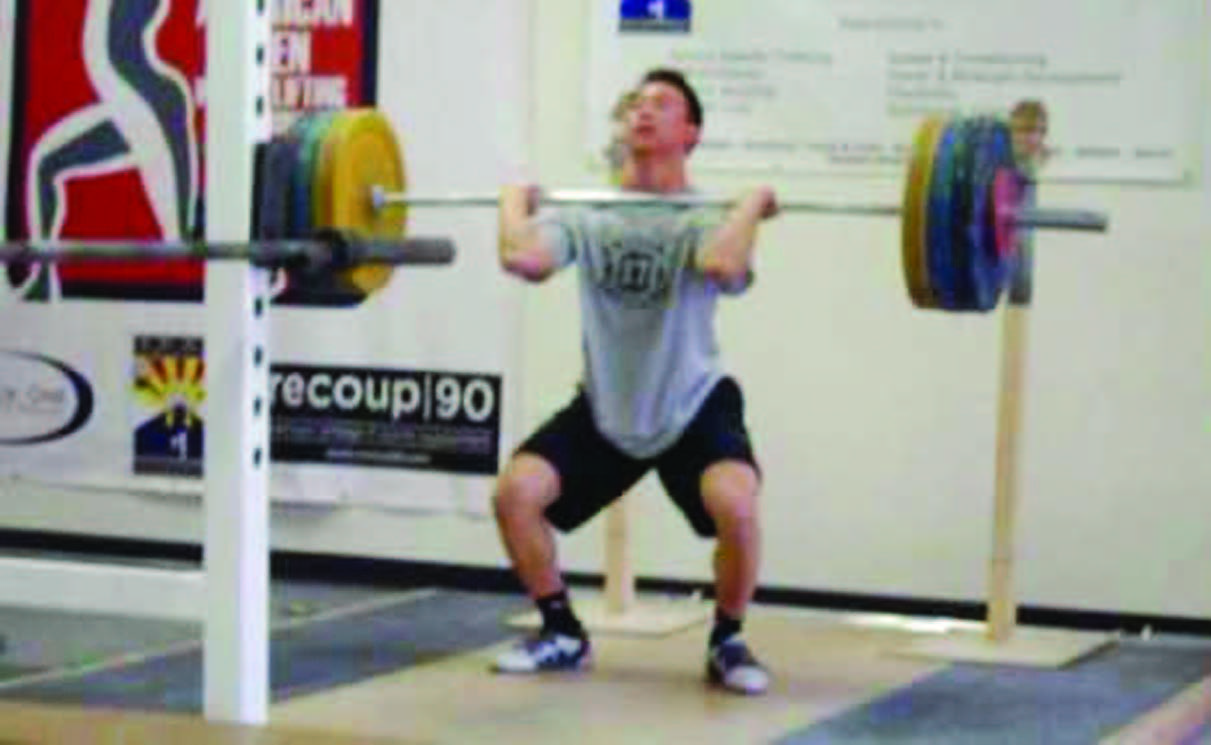
Alex Lee has been training with me almost six years. From the very first time I saw him lift, I knew that Alex was talented and that he could be my next super athlete. To be successful at the upper level of any sport, you need to posses a genetic gift of natural talent. Alex has tremendous flexibility and natural explosive power. He has great kinetic awareness about his body that can’t be taught. My main goal was to teach him how to study the sport from a mechanical level and to apply his natural ability to sound fundamental skills. What Alex lacks is a strong first pull. It causes him to shoot his hips and to have too slow of a first movement. Our goal leading into this World Championships was to address his lower back strength and enhance position off the ground.
I have a running motto that I use in the gym and with all my teaching courses. Olympic Weightlifting is about establishing strength to hold a position and strength to move through position. If you are not strong enough to hold yourself in certain key positions, you won’t have the strength to move from one position to the next without losing form. This fundamental principle gets overlooked by many athletes and coaches in teaching how to lift. Our competition preparation phase can start anywhere from 8 to 12 weeks out from a major event. Alex had around 8 weeks from the World University Championships to the Senior World Championships to stay focused and train.
In our competition phase our elite athletes train nine times a week. This includes double workouts on Monday, Wednesday and Friday, one workout on Tuesday, Thursday and Saturday and one mandatory therapy/recovery session. This is what Alex’s program looked like the last 8 weeks out leading into the World Championships.
Alex’s extensive experience in my program has allowed him to understand each phase of our training cycles and he can mental prepare himself for the physical grind of each phase. A program of this caliber is only for the experienced weightlifters and should not be duplicated by novice lifters. My program is based off set goals the athlete must hit for a workout, week, and cycle. We work partly off of set percentages and how the athlete feels. When they feel good, we push it beyond what the program calls for. When they aren’t feeling up to par they still have minimum numbers they need to hit to keep pace for their weekly and cycle goals. We set goals on a variety of lifts to constantly challenge the athlete. When possible we have brought in other top notch lifters for Alex and Sarah to train with. If the situation is available, we encourage our athletes to train abroad to get a higher level of motivation. Alex has trained in Korea and Armenia along with traveling to Colombia, Canada, Taiwan, and Turkey for competitions. Each experience with upper elite lifters and coaches will make you better if and only if you take advantage of the opportunity by asking the right questions and showing them you are serious about the sport.
In our competition phase, Alex hit the full lifts twice a day on Monday, Wednesday, & Friday and power versions of the lifts on Tuesday, Thursday, & Saturday. Each session had a different percentage goal based off of the goal for the week. Several times, Alex exceeded the goal for the day by 3-5 kilos. On some workouts he was required to hit his top weight for one single set, other sessions he would perform multiple sets at the top weight for that exercise, and other sessions he was instructed to keep going up in weight until he missed his top weight more than 3 times. All of this was built into the program. My goal when we train heavy is to train the athlete mentally in going after max & sub-max weights but also to train his body from a technical aspect not to deviate from the motor pattern. Many lifters try to change things up when the weights get heavier. Our goal with Alex is and always has been to keep his butt down on his pull with heavier weights. He has made tremendous strides in this area but it will always be an area that he will have to work on. He is slow off the ground but lightning fast under the bar. This training program has worked well for Alex and has developed him into the number one ranked lifter in the 62 & 69 kilo weight class. His sights now are to move permanently into the 69 kilo win the Nationals, break the American Records in this class, make the Pan American Games Team, and finish 2011 off by making the World Team.
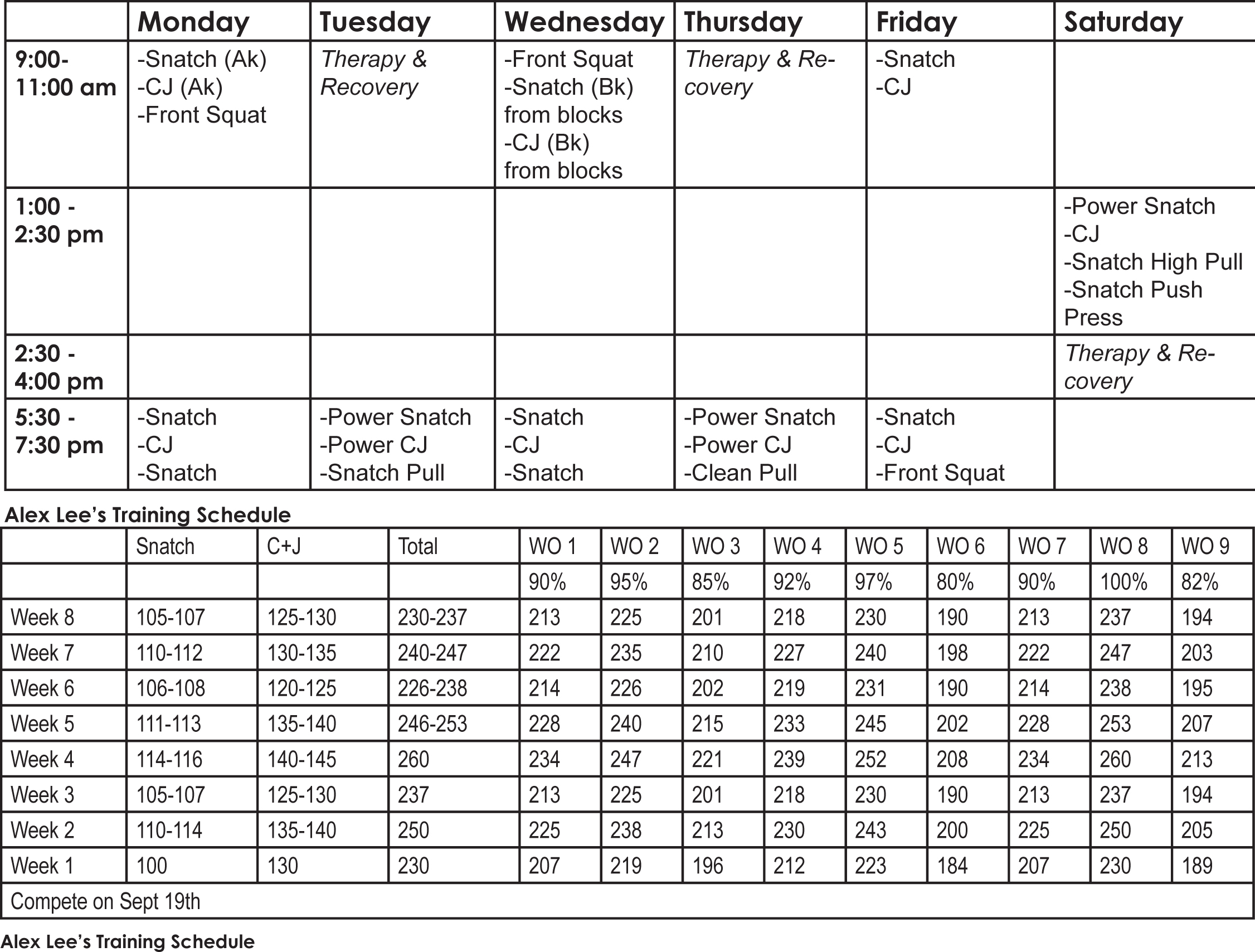
Sarah Robles
Sarah Robles is the number one overall ranked female weightlifter in the US. She started training with me back in January 2008. She originally came to me to improve her strength & conditioning program for throwing while she attended Arizona State University on a track & field scholarship. Through the course of her training, Sarah gravitated more and more toward Weightlifting and eventually left throwing to pursue lifting full time. In that first year of training with mem Sarah placed 2nd at the Junior World Championships. In her second year Sarah won the Senior National Championships, placed 5th at the Pan American Championships, and finished 11th at the Senior World Championships. In 2010, she placed 2nd at the Pan American Championships and 10th. Sarah has lifted the second heaviest total ever by a woman in US history. Sarah hit two personal records in the Snatch (108 & 111 kilos), tied her personal record in the Clean & Jerk (140 kilos), and hit a new personal record in the Total (251 kilos). She is a two time Pan Am Team & World Team Member. She is a definite Olympic Hopeful for 2012. I will briefly explain her training going into the last 8 weeks leading up to the World Championships in Antalya, Turkey.
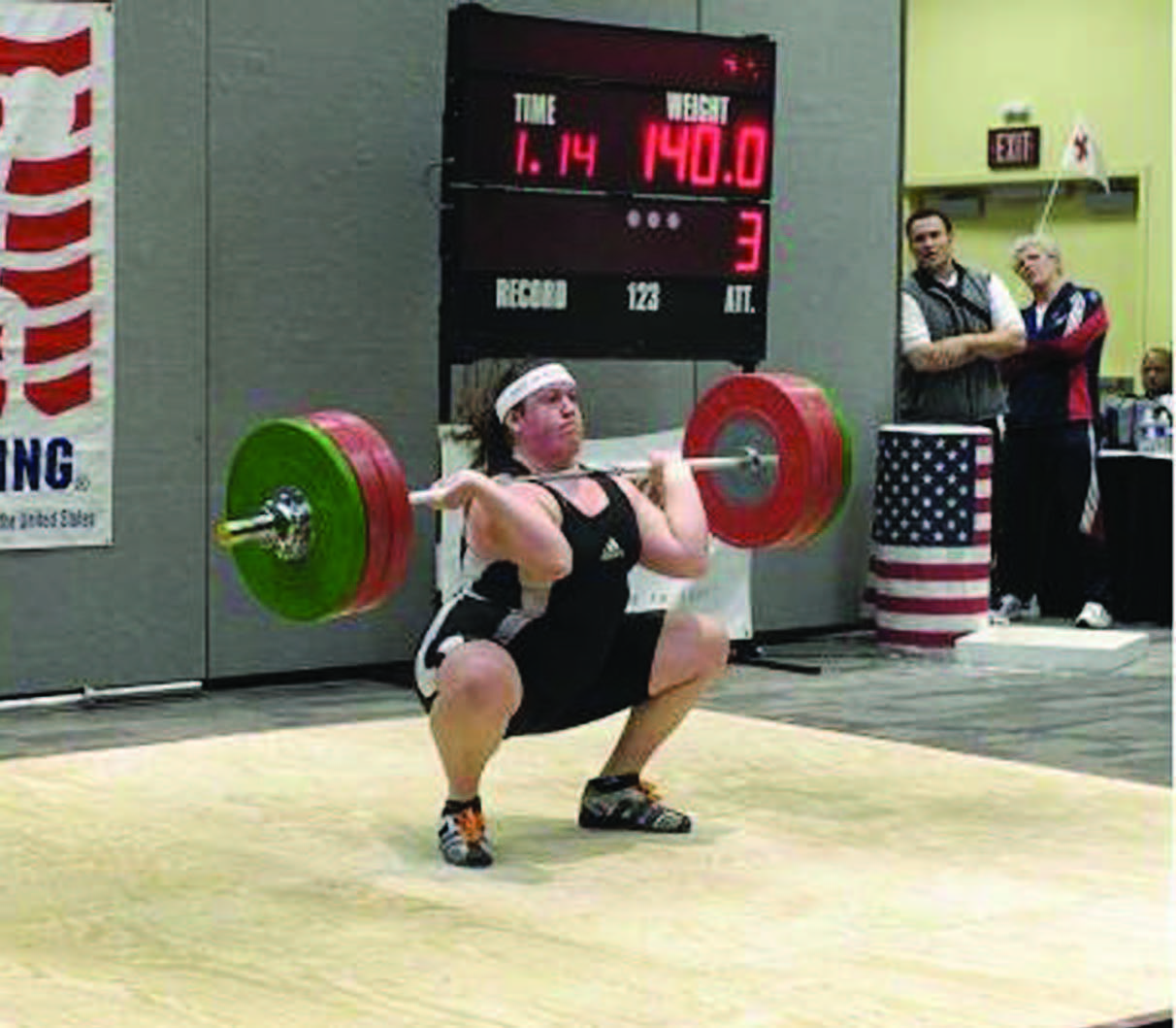
Unlike Alex, Sarah can handle a tremendous amount of volume when she trains, more so than most heavy weightlifters. This ability has also prevented her from pushing herself to lift maximum. Sarah has only scratched the service of her Weightlifting career. Sarah returned to Arizona after the 2010 Pan American Championships to get back to basics with her training and to get her “butt kicked” by me. She had gotten away from the rigorous program that she had when she trained with me leading up to her 2nd place finish at the 2008 Junior World Championships. When she came back I told her this entire training cycle was developed to make her mentally tough with her training. She needed to push her body to start making bigger strides in improvement if she ever planned on breaking into the upper elite circle at the international level. Sarah put 15 kilos on her total and 15 kilos on her front squat max in this training cycle leading into the Worlds. Unlike Alex’s program of working up to a heavy set and hitting it for multiple sets. Sarah needed to handle and go after the heavier weights. Sarah’s training program consisted more of pushing it to near maximum attempts at least two workout sessions a week. This was more mentally fatiguing for her and proved to be the area she needed the most help with. It takes a tremendous amount of dedication to mentally gear yourself up for this type of training. She trained this way early in her career with me but abandoned it when she went to the Olympic Training Centers. Now she was back and we were pushing her to adapt to a higher level of expectations. Sarah doesn’t recover as fast as a lighter lifter does so her unload weeks which were every third to fourth week saw a more dramatic drop off in intensity than, say, Alex’s program, which stay relatively high even during his unload week. This allowed Sarah to fully recharge her batteries physically and mentally going into the harder weeks. After the usual adaptation period of 6-8 weeks under this system, Sarah responded quite well and lifted very well at the worlds hitting three personal records and recording the second heaviest total ever by a woman in US History.
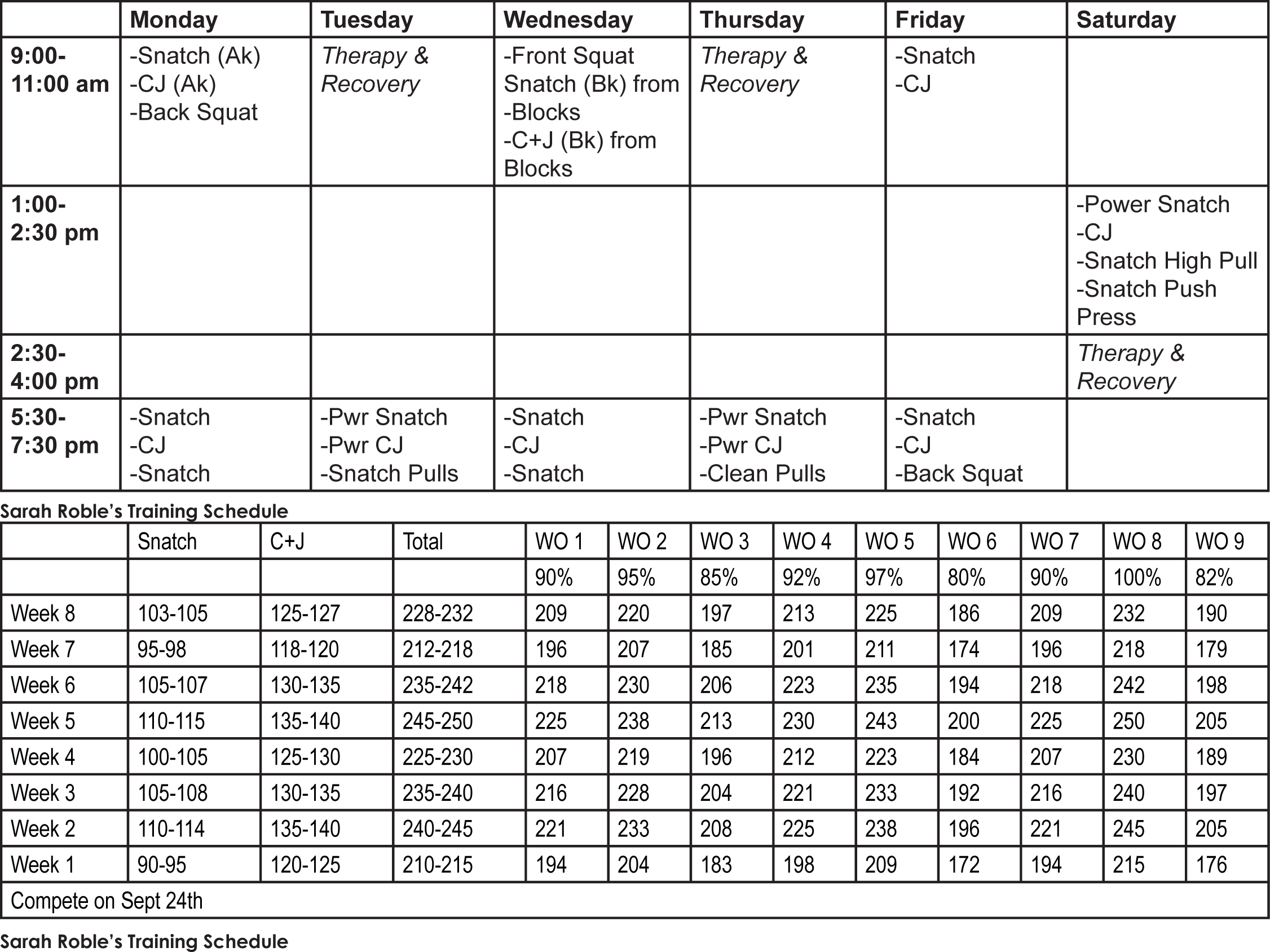
The keys to my program start with establish a sound technical base with my athletes. We are always striving on enhancing our technical proficiency of the movements in every workout. Second we push it. We are always trying to increase the weight we use for a given exercise. My program gears pushing the athlete to a place he or she has not gone before. I tweak the program based on individual differences of the athlete but for the most part they are challenged by a daily, weekly, and cycle goals to constantly improve. At this level the athletes know what needs to be done; now it’s my job to develop the systematic plan and mental motivation to get them there.
Alex Lee
Alex Lee was 2008 Junior World Team Member, 2009 Pan American Team Member, 2010 Collegiate National Champion, 2010 World University Champion, Collegiate American Record Holder in the Clean & Jerk and Total, and 2010 World Team Member. At the World Championships he placed 20th in the 62 kilo weight class. Alex was the only American to attempt an American Record at the World Championships. He is currently the number one ranked lifter in the 62 & 69 kilo weight class nationally. Alex is also an Olympic Hopeful for 2012.

Alex Lee has been training with me almost six years. From the very first time I saw him lift, I knew that Alex was talented and that he could be my next super athlete. To be successful at the upper level of any sport, you need to posses a genetic gift of natural talent. Alex has tremendous flexibility and natural explosive power. He has great kinetic awareness about his body that can’t be taught. My main goal was to teach him how to study the sport from a mechanical level and to apply his natural ability to sound fundamental skills. What Alex lacks is a strong first pull. It causes him to shoot his hips and to have too slow of a first movement. Our goal leading into this World Championships was to address his lower back strength and enhance position off the ground.
I have a running motto that I use in the gym and with all my teaching courses. Olympic Weightlifting is about establishing strength to hold a position and strength to move through position. If you are not strong enough to hold yourself in certain key positions, you won’t have the strength to move from one position to the next without losing form. This fundamental principle gets overlooked by many athletes and coaches in teaching how to lift. Our competition preparation phase can start anywhere from 8 to 12 weeks out from a major event. Alex had around 8 weeks from the World University Championships to the Senior World Championships to stay focused and train.
In our competition phase our elite athletes train nine times a week. This includes double workouts on Monday, Wednesday and Friday, one workout on Tuesday, Thursday and Saturday and one mandatory therapy/recovery session. This is what Alex’s program looked like the last 8 weeks out leading into the World Championships.
Alex’s extensive experience in my program has allowed him to understand each phase of our training cycles and he can mental prepare himself for the physical grind of each phase. A program of this caliber is only for the experienced weightlifters and should not be duplicated by novice lifters. My program is based off set goals the athlete must hit for a workout, week, and cycle. We work partly off of set percentages and how the athlete feels. When they feel good, we push it beyond what the program calls for. When they aren’t feeling up to par they still have minimum numbers they need to hit to keep pace for their weekly and cycle goals. We set goals on a variety of lifts to constantly challenge the athlete. When possible we have brought in other top notch lifters for Alex and Sarah to train with. If the situation is available, we encourage our athletes to train abroad to get a higher level of motivation. Alex has trained in Korea and Armenia along with traveling to Colombia, Canada, Taiwan, and Turkey for competitions. Each experience with upper elite lifters and coaches will make you better if and only if you take advantage of the opportunity by asking the right questions and showing them you are serious about the sport.
In our competition phase, Alex hit the full lifts twice a day on Monday, Wednesday, & Friday and power versions of the lifts on Tuesday, Thursday, & Saturday. Each session had a different percentage goal based off of the goal for the week. Several times, Alex exceeded the goal for the day by 3-5 kilos. On some workouts he was required to hit his top weight for one single set, other sessions he would perform multiple sets at the top weight for that exercise, and other sessions he was instructed to keep going up in weight until he missed his top weight more than 3 times. All of this was built into the program. My goal when we train heavy is to train the athlete mentally in going after max & sub-max weights but also to train his body from a technical aspect not to deviate from the motor pattern. Many lifters try to change things up when the weights get heavier. Our goal with Alex is and always has been to keep his butt down on his pull with heavier weights. He has made tremendous strides in this area but it will always be an area that he will have to work on. He is slow off the ground but lightning fast under the bar. This training program has worked well for Alex and has developed him into the number one ranked lifter in the 62 & 69 kilo weight class. His sights now are to move permanently into the 69 kilo win the Nationals, break the American Records in this class, make the Pan American Games Team, and finish 2011 off by making the World Team.

Sarah Robles
Sarah Robles is the number one overall ranked female weightlifter in the US. She started training with me back in January 2008. She originally came to me to improve her strength & conditioning program for throwing while she attended Arizona State University on a track & field scholarship. Through the course of her training, Sarah gravitated more and more toward Weightlifting and eventually left throwing to pursue lifting full time. In that first year of training with mem Sarah placed 2nd at the Junior World Championships. In her second year Sarah won the Senior National Championships, placed 5th at the Pan American Championships, and finished 11th at the Senior World Championships. In 2010, she placed 2nd at the Pan American Championships and 10th. Sarah has lifted the second heaviest total ever by a woman in US history. Sarah hit two personal records in the Snatch (108 & 111 kilos), tied her personal record in the Clean & Jerk (140 kilos), and hit a new personal record in the Total (251 kilos). She is a two time Pan Am Team & World Team Member. She is a definite Olympic Hopeful for 2012. I will briefly explain her training going into the last 8 weeks leading up to the World Championships in Antalya, Turkey.

Unlike Alex, Sarah can handle a tremendous amount of volume when she trains, more so than most heavy weightlifters. This ability has also prevented her from pushing herself to lift maximum. Sarah has only scratched the service of her Weightlifting career. Sarah returned to Arizona after the 2010 Pan American Championships to get back to basics with her training and to get her “butt kicked” by me. She had gotten away from the rigorous program that she had when she trained with me leading up to her 2nd place finish at the 2008 Junior World Championships. When she came back I told her this entire training cycle was developed to make her mentally tough with her training. She needed to push her body to start making bigger strides in improvement if she ever planned on breaking into the upper elite circle at the international level. Sarah put 15 kilos on her total and 15 kilos on her front squat max in this training cycle leading into the Worlds. Unlike Alex’s program of working up to a heavy set and hitting it for multiple sets. Sarah needed to handle and go after the heavier weights. Sarah’s training program consisted more of pushing it to near maximum attempts at least two workout sessions a week. This was more mentally fatiguing for her and proved to be the area she needed the most help with. It takes a tremendous amount of dedication to mentally gear yourself up for this type of training. She trained this way early in her career with me but abandoned it when she went to the Olympic Training Centers. Now she was back and we were pushing her to adapt to a higher level of expectations. Sarah doesn’t recover as fast as a lighter lifter does so her unload weeks which were every third to fourth week saw a more dramatic drop off in intensity than, say, Alex’s program, which stay relatively high even during his unload week. This allowed Sarah to fully recharge her batteries physically and mentally going into the harder weeks. After the usual adaptation period of 6-8 weeks under this system, Sarah responded quite well and lifted very well at the worlds hitting three personal records and recording the second heaviest total ever by a woman in US History.

The keys to my program start with establish a sound technical base with my athletes. We are always striving on enhancing our technical proficiency of the movements in every workout. Second we push it. We are always trying to increase the weight we use for a given exercise. My program gears pushing the athlete to a place he or she has not gone before. I tweak the program based on individual differences of the athlete but for the most part they are challenged by a daily, weekly, and cycle goals to constantly improve. At this level the athletes know what needs to be done; now it’s my job to develop the systematic plan and mental motivation to get them there.
|
Joe Micela is a Senior International Coach with USA Weightlifting, Head Coach to Team Arizona Weightlifting, and Owner of Performance One Advanced Sports Training in Mesa, AZ. He has coached athletes to state, regional, national, and international medals in the sport of Olympic Weightlifting. In 2009 he was the Assistant Coach for both the Men’s & Women’s World Team. In 2010, Coach Micela was the Head US Women’s Coach for the Pan American Team and later that year was a Coach & Team Manager for the 2010 Senior World Team. |
Search Articles
Article Categories
Sort by Author
Sort by Issue & Date
Article Categories
Sort by Author
Sort by Issue & Date

